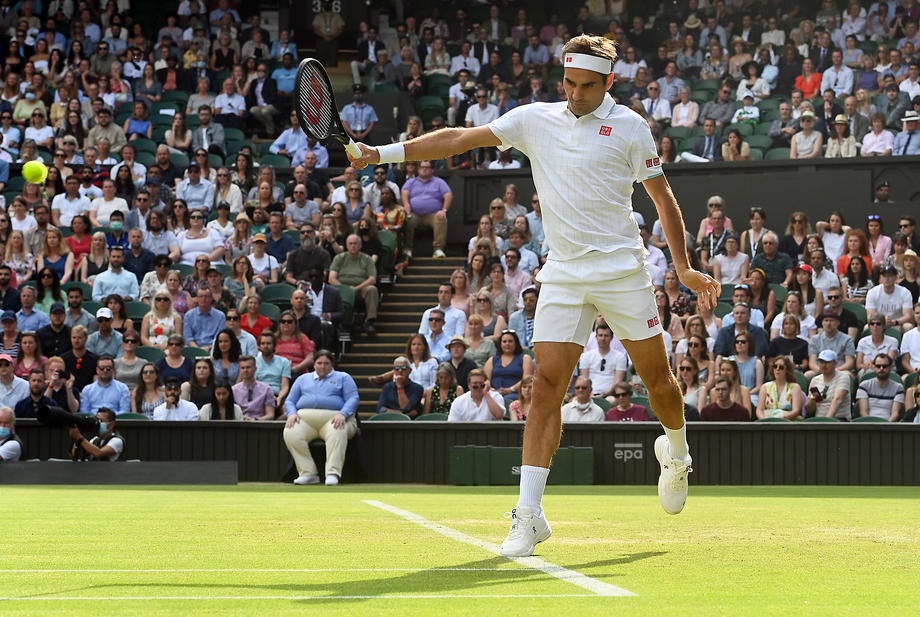- Taylor Fritz to Play Opening Match February 13 in Historic Delray Beach Open Three-Peat Quest
- Stars Join Forces for Eisenhower Cup Return to Indian Wells on March 4
- Ken Thomas Broadcasting from Georgia’s Rome Tennis Open
- Solinco Launches All-New Whiteout V2 Racquet
- Stringlet: Serving Up Tennis Inspiration With A Twist
- Davis Cup qualifying to feature Brazil vs. France and Spain vs. Switzerland
- 2025 US Open Expands to Sunday Start
- Tennis Channel To Broadcast U.S. Davis Cup Qualifier vs. Tawain
- Stefanos Tsitsipas Receives Rotterdam Wild Card From Richard Krajicek
- Tien and Basavareddy to Play Delray Beach Open Qualifying
- Australian Open Tennis 2025 Ends with Madison Keys and Jannick Sinner As Winners By Alix Ramsay
- 2025 Australian Open Final Draws
- Jannik Sinner Sweeps Alexander Zverev for Second Straight Australian Open Title
- Ricky’s pick for the Australian Open final: Sinner vs. Zverev
- Australian Open Draws and Order Of Play for Sunday, January 26, 2025
Rafa Nadal Wins The 2019 U.S. OPEN Tennis And His 19th MAJOR • Beats Medvedev In 5
- Updated: September 8, 2019
By Alix Ramsay
Nineteen and counting. Rafa Nadal is hunting down history. With his fourth US Open trophy, his 19th career grand slam title, safely tucked away in his kitbag, he is homing in on Roger Federer at the top of the leader board.
That Rafa beat Daniil Medvedev comes as no surprise – the 23-year-old Russian was playing his first major final, he had played 22 sets to get there and spent more than 15 hours on court. But that he beat Medvedev 7-5, 6-3, 5-7, 4-6, 6-4 in four hours and 50 minutes was unbelievable.
Medvedev was the underdog in every respect as the match began. But the only man in the 23,000 stadium who did not see the Russian world No.5 in that light was the eventual champion. Which is why he won. He did not trust Medvedev as far as he could throw him: this young, tall, spindly man was a nightmarish threat to Rafa’s hopes and dreams. He had to track him every inch of the way to the finish line.
Before the final, Carlos Moya had described Medvedev as a “fronton”, the wall against which pelota players wallop the ball. For those who have never seen pelota, imagine a cross between squash and handball – and it is huge in the Basque region of Spain. No matter where you hit the ball, no matter how hard you hit it or how much spin you put on the ball, the fronton gets it back. Daniil Medvedev, all 6ft 6ins of him, is the human fronton.

Nadal knew all about this. He had told everybody as much as soon as his semi-final was over. This was going to be tough. Having watched the man he beat in the Montreal final for the loss of just three games, the world No.2 had made a careful note of just how much Medvedev had improved in the past few weeks. This final would be nothing like the Montreal thrashing.
Normally, major finals take a while to settle down. A combination of nerves and caution make for edgy exchanges and little to cheer for at least 20 minutes or so. But not this time. Sure, Rafa looked tense – his first serve percentage was in the 40s and there were a few forehand fluffs that came as a complete surprise – but there was so much else to marvel at.
The very first game had everything: with Rafa serving, we had the first double fault, the first outrageous round-the-net-post winner, the first break point, the first time violation warning… we could have gone home then: we had seen it all. But we stayed and we saw Medvedev get the first break; the fronton had a plan and it was working.
Rafa, though, had seen pelota before (he is Spanish, after all). He knew what he was in for and he had a range of tricks up his knicker leg (he was wearing a sleeveless shirt so there was nowhere else to put them). He tried the high, floaty ball to give Medvedev no pace, he served and volleyed and in between times, he tried to run the legs off the Russian.
As Martina Navratilova pointed out: “Rafa just keeps coming at you,” she said, “and that beats you up eventually.”
She was right, too; it was just the length of time it took to catch up with Medvedev that came a surprise. But Rafa squeezed and squeezed. He broke back, he squeezed again. He never gave up on any point – he never does – and he squeezed some more. Finally, after 62 minutes of this pressure, the air was pierced by the familiar sound of Rafa’s opponent’s pips squeaking: he broke the Medvedev serve to take the first set.
No one would have blamed Medvedev for folding after that. But he didn’t. This particular fronton has far more to him than meets the eye. He can move like lightning, he can serve with venom, he can volley (even if he doesn’t want to), he has touch – and he tried the lot to stop Rafa running away with the match. In that he was successful – Rafa has to sweat bullets to get the job done – but he could not stop the inevitable.
Finding his second wind, the Russian bean pole came back from a break down to force the issue. Regrouping, he stuck in and stayed with Nadal as they tiptoed towards a tiebreak. But then his luck changed: Rafa had done all the hard work, he had created the opportunity on a break point, all he had to do was rely on his trusty smash and the break would be his. But he swatted the ball into the net. The chance had gone. Medvedev lived to fight again.
For the next set and a half, the Russian was cruising through a purple patch: everything he touched worked while Rafa looked uncertain and weary. He took the third set, he had a break point to take the early lead in the fourth…but Rafa would not budge.
Just as Uncle Toni taught him all those years ago in Manacor, to succeed, you must suffer. The two go hand in hand. Nothing worth having comes easy in this life, certainly not the biggest prizes in sport. And Rafa was suffering.
The longer it went on, the more physical the battle became. Every time Rafa seemed to have steadied the ship, Medvedev came up with something remarkable to grab the momentum again. Volleys, ridiculous winners down both lines – chutzpah, skill, deft touches; there was nothing Medvedev was not willing to try or was not gifted enough to pull off. It got him to the fifth set.

It did not seem possible but the quality of the tennis was getting better as the match approached the four hour mark. Medvedev had three break points and on the third, Rafa was docked a first serve for another time violation. No matter, he held. The bit was between his teeth.
Medvedev was seemingly secure at 40-0 on his own serve. But that was when Martina’s words came back to haunt him: “Rafa just keeps coming at you.” And he did. No game is a lost cause for the Spaniard and so back he came, whittling away that safety margin until, at the end of a 28-stroke rally, he broke the Russian. Five minutes later, he broke him again.
Because it is was the US Open final and because he could, the umpire decided to have a say in matters, calling Rafa for another time violation and docking him another first serve as he was trying to serve for the title. It was break point at the time, and it led to a Nadal double fault and yet another break of serve. Well, at this point, why wouldn’t it?
Rafa went to serve for it again but he could not buy a first delivery. Another break point. If this was torture for those watching, who knows what it must have been like for the two men on court. And yet when it came the absolute crunch, when his back was welded to the wall – pushed there by that fronton – Rafa came up with the most delicate of drop shots and then a service winner to claim his prize after four hours and 50 minutes.
As Rafa clutched his 19th grand slam trophy, Martina’s thought, that Rafa just keeps coming at you, rang true and, as she pointed out: “and that beats you up eventually.” With the 2020 grand slam season just three and a half months away, Rafa is coming after Roger. And that beats you up eventually.






